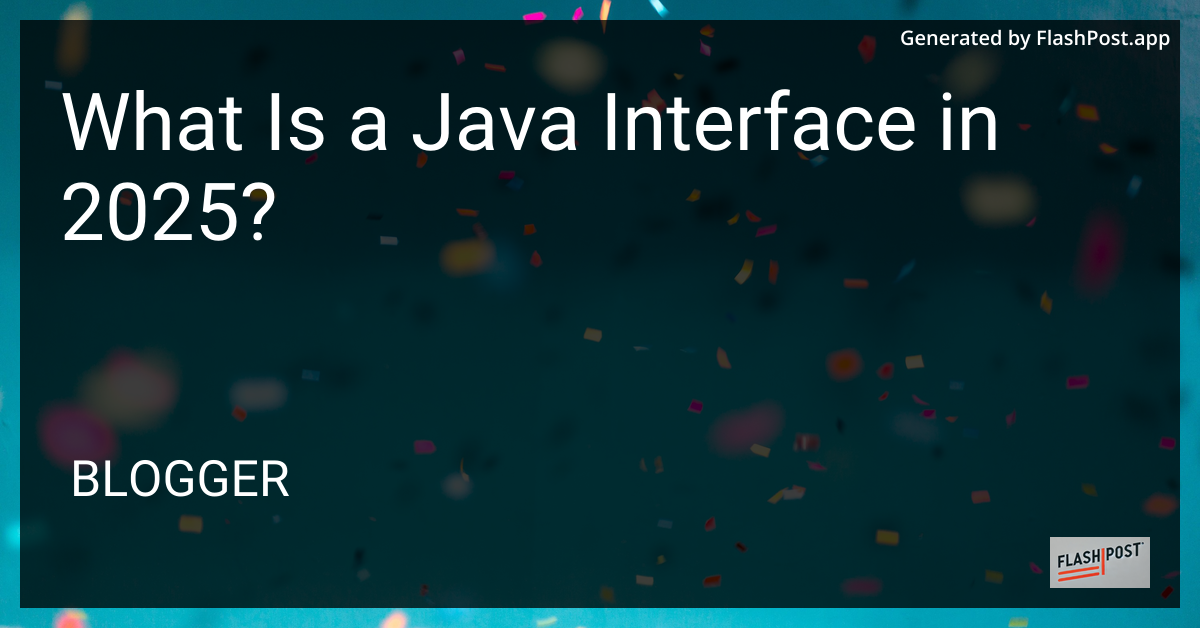What Is a Java Interface in 2025?

What is a Java Interface in 2025?
In the constantly evolving landscape of programming, understanding Java interfaces remains as crucial in 2025 as it was in the past. With the continuous growth of Java and its applications across various industries, interfaces continue to play a vital role in designing robust and scalable applications. This article aims to delve into what Java interfaces are, their importance, and how they are evolving in 2025.
Understanding Java Interfaces
A Java interface is a reference type, similar to a class, that can contain only constants, method signatures, default methods, static methods, and nested types. By definition, interfaces abstract the way a class interacts with the external environment. They serve as a contract that other classes can implement, ensuring a structure in object-oriented programming.
Unlike classes, interfaces cannot store any state information (instance variables). This means they are entirely abstract and meant to be implemented by other classes or interfaces, providing the method definitions that outlined behavior should follow.
Why Use Interfaces?
1. Abstraction and Decoupling
Interfaces allow for strong abstraction in code. By defining what needs to be done rather than how it is done, interfaces help decouple dependencies between classes, leading to more modular, maintainable, and flexible codebases.
2. Multiple Inheritance
Java interfaces enable multiple inheritance, allowing a class to implement various interfaces. This bypasses the single inheritance restriction of Java classes, enabling a more flexible and robust class design.
3. Polymorphism
Interfaces provide a way for achieving polymorphism. A single interface can lead to different classes implementing it in various ways, allowing for dynamic method calls and flexibility during runtime.
The Evolution of Interfaces by 2025
Java interfaces have undergone significant evolutions, particularly with the introduction of default and static methods in Java 8. By 2025, these features have been widely adopted and leveraged for more extensive use-cases:
Default Methods
Default methods in interfaces allow developers to provide a default implementation for methods. This capability helps extend interfaces without affecting existing implementations significantly, thus maintaining backward compatibility.
Static Methods
The inclusion of static methods in interfaces adds static utility methods, which are operations on the interface type that do not require an instance.
Functional Interfaces
With the functional programming paradigm gain traction, functional interfaces have become more significant, specifically with lambda expressions, enabling more concise and readable code.
Practical Uses
Java interfaces are integral in frameworks and libraries that underpin large-scale applications. Some practical applications include:
Design Patterns: Many design patterns, especially structural and behavioral, rely on interfaces. They formalize relationships between classes and the interactions between them.
Framework Development: Interfaces play a critical role in the design and implementation of Java frameworks, ensuring that developers adhere to expected conventions and patterns.
For more insights on converting objects with ease, consider exploring this Java List Conversion. Additionally, ensure your forms are working seamlessly with the help of JavaScript Form Validation techniques, which ensure a smooth user experience.
Conclusion
As we forge ahead into 2025, understanding and leveraging Java interfaces continues to be a cornerstone for building robust applications. The continuous evolution of interfaces with features like default and static methods enhances their utility and adaptability, making them indispensable in modern software engineering. From enabling multiple inheritance to ensuring strong abstraction, interfaces are integral to developer efforts aimed at achieving clean and efficient code. Expand your knowledge further by delving into Java Regex applications for broader technological competence.
Comments
Post a Comment